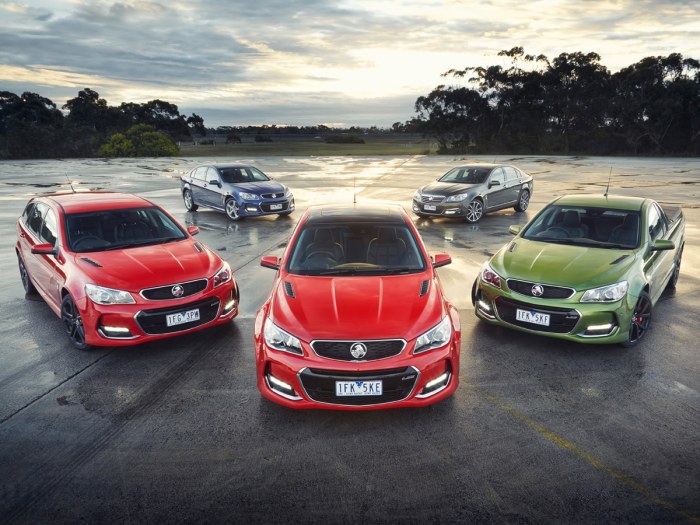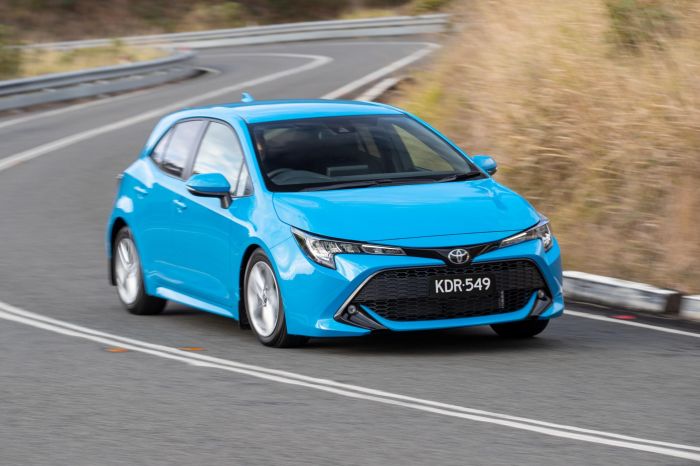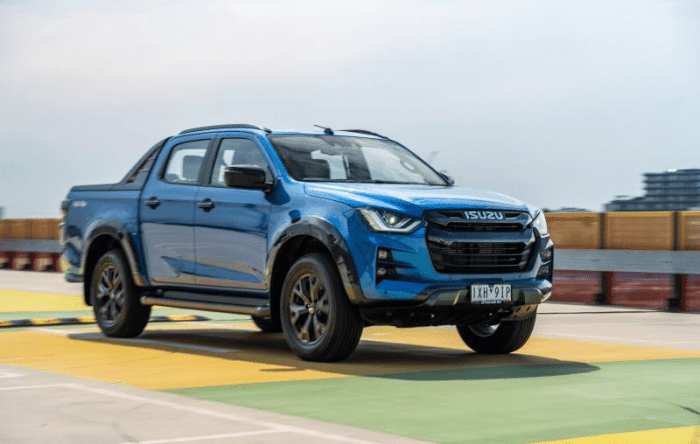All New Car List and Price Australia
Australian New Car Market Overview

Source: manofmany.com
All new car list and price australia – The Australian new car market is a dynamic landscape influenced by a variety of factors, including economic conditions, consumer preferences, and government regulations. Understanding these influences is crucial for both buyers and industry stakeholders. This section provides an overview of the current market, highlighting key trends and their impact on pricing.
Current Market Trends and Influencing Factors
The Australian new car market has experienced fluctuations in recent years. Economic downturns can significantly impact sales, while consumer confidence plays a crucial role in purchasing decisions. The rising cost of living and interest rates also affect affordability. Furthermore, supply chain disruptions continue to impact vehicle availability, leading to price increases and longer waiting times. Government incentives for fuel-efficient or electric vehicles can also shape market trends.
Popular Car Segments in Australia
SUVs remain the dominant segment in the Australian market, driven by their practicality and versatility. This is followed by utes (pick-up trucks), popular for both personal and commercial use. Sedans still hold a significant share, although their popularity has been declining in recent years compared to the rise of SUVs. The light commercial vehicle market also remains strong.
Government Policies and Regulations on New Car Prices
Government policies, including import tariffs and taxes, significantly influence the price of new cars in Australia. Changes in fuel efficiency standards and emissions regulations can also affect vehicle pricing, with manufacturers adapting to meet these requirements. Government incentives aimed at promoting electric or hybrid vehicles can also impact the overall market dynamics and pricing.
Average New Car Prices Across Segments
| Segment | Average Price (AUD) |
|---|---|
| Small SUV | $35,000 – $45,000 |
| Medium SUV | $45,000 – $65,000 |
| Large SUV | $65,000 – $100,000+ |
| Sedans | $30,000 – $60,000 |
| Utes | $40,000 – $80,000+ |
Top Selling New Car Brands in Australia
Several brands consistently rank among the top sellers in the Australian new car market. Their success is attributed to a combination of factors, including brand reputation, pricing strategies, and the features offered in their vehicles. This section identifies the top brands and analyzes their market strategies.
Top Selling Car Brands and Reasons for Popularity
Toyota, Mazda, Mitsubishi, Ford, and Hyundai consistently feature among the top-selling brands. Toyota’s reputation for reliability and fuel efficiency contributes significantly to its market dominance. Mazda’s stylish designs and advanced features appeal to a broad customer base. Mitsubishi offers competitive pricing and practical vehicles. Ford’s strong presence in the ute segment, and Hyundai’s value-for-money proposition, also contribute to their success.
Kia and Isuzu also frequently appear in the top 10.
Pricing Strategies of Top Brands
Each brand employs different pricing strategies. Toyota often positions itself as offering reliable, fuel-efficient vehicles at competitive prices. Mazda focuses on a slightly higher price point, emphasizing style and advanced features. Mitsubishi generally targets the budget-conscious consumer. Ford leverages its strength in the ute market with a range of pricing options, while Hyundai emphasizes value for money across its model range.
Key Features of Top-Selling Models
- Toyota: Reliability, fuel efficiency, advanced safety features (Toyota Safety Sense).
- Mazda: Stylish design, advanced infotainment systems, comfortable interiors.
- Mitsubishi: Competitive pricing, practicality, all-wheel-drive options (in many models).
- Ford: Tough and capable utes, strong towing capacity, advanced driver-assistance systems.
- Hyundai: Value for money, generous warranties, stylish designs.
Price Analysis of Specific Car Models
This section provides a detailed price analysis of three popular car models across different segments: a small SUV, a family sedan, and a ute. The analysis includes price ranges across various trim levels and optional features.
Detailed Price Analysis of Selected Models
We will consider the Mazda CX-30 (small SUV), Toyota Camry (family sedan), and Ford Ranger (ute) as examples. Each model offers different trim levels with varying features and price points. The price ranges presented below are indicative and may vary depending on the dealer and specific options selected.
Model, Trim Level, Features, and Price Comparison
| Model | Trim Level | Key Features | Price (AUD) |
|---|---|---|---|
| Mazda CX-30 | G20 | Standard safety features, basic infotainment | $30,000 – $33,000 |
| Mazda CX-30 | GT | Advanced safety, premium infotainment, leather seats | $38,000 – $42,000 |
| Toyota Camry | Ascent | Standard features, comfortable interior | $35,000 – $38,000 |
| Toyota Camry | SL | Advanced safety, premium features, sunroof | $45,000 – $50,000 |
| Ford Ranger | XL | Basic features, workhorse capabilities | $40,000 – $45,000 |
| Ford Ranger | Wildtrak | Advanced features, off-road capabilities, premium interior | $70,000 – $80,000 |
Factors Affecting New Car Prices in Australia
Several factors contribute to the final price of a new car in Australia. Understanding these influences is crucial for informed purchasing decisions. This section explores the key factors impacting new car pricing.
Import Duties and Taxes

Source: com.au
Import duties and taxes represent a significant portion of the final price for imported vehicles. These taxes vary depending on the vehicle’s country of origin, engine size, and other factors. Changes in government policies related to import duties can directly impact new car prices.
Currency Fluctuations
Fluctuations in the Australian dollar against other currencies, particularly the US dollar (as many vehicles are imported from the US, Japan, and Europe), directly affect the cost of imported vehicles. A weaker Australian dollar leads to higher import costs, resulting in increased prices for consumers.
Supply Chain Disruptions, All new car list and price australia
Global supply chain disruptions, such as those experienced during the COVID-19 pandemic, have significantly impacted car availability and pricing. Shortages of semiconductor chips and other components have led to production delays and increased prices.
Dealer Markups
Dealers play a role in determining the final price paid by consumers. While the manufacturer’s suggested retail price (MSRP) serves as a benchmark, dealers may add markups, particularly in high-demand situations. These markups can significantly increase the final cost of the vehicle.
Illustrative Examples of New Car Prices
This section provides detailed descriptions of three different new car models, including their specifications, features, and pricing, along with an estimate of running costs.
Detailed Descriptions of New Car Models

Source: uptrend.com
Let’s consider the Kia Sportage (small SUV), the Hyundai Sonata (family sedan), and the Toyota Hilux (ute). These models represent a range of price points and features within their respective segments. The specifications provided are for illustrative purposes and may vary depending on the trim level and options chosen.
Kia Sportage: A stylish and practical small SUV offering a balance of features and affordability. Expected fuel efficiency is around 7-8L/100km. Standard safety features typically include multiple airbags, lane-keeping assist, and autonomous emergency braking. Warranty periods generally range from 5-7 years.
Hyundai Sonata: A comfortable and spacious family sedan known for its value proposition. Fuel efficiency is typically around 7-8L/100km. Standard safety features are comparable to the Kia Sportage. Warranty periods are similar.
Toyota Hilux: A robust and reliable ute popular for its durability and towing capacity. Fuel efficiency is lower, around 9-10L/100km. Safety features often include driver-assistance systems suitable for towing and off-road driving. Warranty is typically 3-5 years.
Running Costs Comparison
| Model | Annual Fuel Cost (approx.) | Annual Insurance (approx.) | Annual Maintenance (approx.) |
|---|---|---|---|
| Kia Sportage | $1500 – $2000 | $800 – $1200 | $500 – $800 |
| Hyundai Sonata | $1500 – $2000 | $700 – $1100 | $500 – $800 |
| Toyota Hilux | $2000 – $2500 | $900 – $1300 | $600 – $1000 |
(Note
These are approximate figures and will vary based on driving habits, insurance provider, and maintenance schedule.)*
Future Trends in the Australian New Car Market: All New Car List And Price Australia
The Australian new car market is expected to undergo significant changes in the coming years, driven by technological advancements and evolving consumer preferences. This section explores anticipated trends and their potential impact.
Finding the best deals on new cars in Australia can be challenging, with so many makes and models available at varying prices. For a different perspective on new car pricing, you might find it interesting to compare the data from a different market, such as checking out the 2019 Indiana cheapest brand new car price data. This can give you a broader understanding of global pricing trends before returning to your search for the ideal all new car list and price in Australia.
Growth and Decline in Car Segments
The SUV segment is expected to remain dominant, although growth may slow as the market matures. The electric vehicle (EV) and hybrid vehicle segments are projected to experience significant growth, driven by government incentives and increasing consumer interest in sustainable transportation. The sedan segment may continue its decline as consumer preferences shift towards SUVs and other vehicle types.
Adoption of Electric and Hybrid Vehicles
The adoption of EVs and hybrid vehicles in Australia is expected to accelerate in the coming years, influenced by government policies promoting cleaner transportation, improved battery technology, and increased charging infrastructure. However, challenges remain, including range anxiety, charging infrastructure limitations, and higher initial purchase prices compared to petrol-powered vehicles.
Impact of Technological Advancements
Technological advancements, such as autonomous driving features, advanced driver-assistance systems (ADAS), and connected car technologies, are expected to influence new car prices. These features add to the manufacturing cost, potentially leading to higher prices for consumers, although they may also enhance safety and convenience.
Challenges and Opportunities
The Australian new car market faces challenges such as supply chain disruptions, fluctuating currency values, and the need to adapt to evolving consumer preferences. Opportunities exist in the growth of the EV and hybrid segments, the development of innovative technologies, and the expansion of charging infrastructure. The market’s ability to adapt to these challenges and capitalize on these opportunities will shape its future trajectory.
Key Questions Answered
What are the common hidden costs associated with buying a new car in Australia?
Beyond the sticker price, consider on-road costs (stamp duty, registration, dealer delivery fees), optional extras, and potential financing charges.
How long is the typical warranty on a new car in Australia?
Warranty periods vary by manufacturer and model, typically ranging from 3 to 5 years, sometimes with additional powertrain coverage.
Where can I find the most up-to-date pricing information for new cars in Australia?
Manufacturer websites, automotive news sites, and comparison websites offer relatively current pricing information, though it’s wise to confirm directly with dealerships.
What are the benefits of pre-ordering a new car in Australia?
Pre-ordering can secure a desired model and trim level, especially for popular vehicles, potentially avoiding long wait times. However, prices may change before delivery.





















